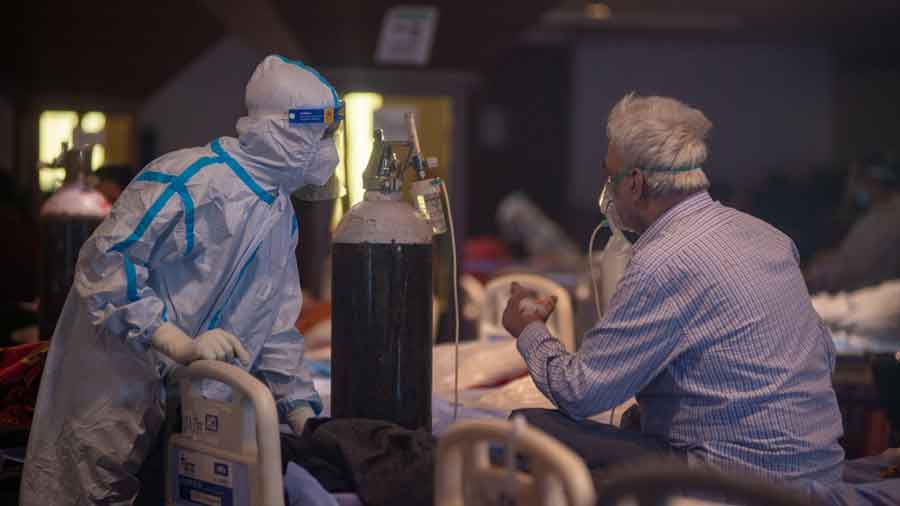“A thoroughly unpleasant period to exist,” Guy R. Williams wrote in the context of health and living in the 18th century in The Age of Agony, an age of puerile States and embryonic public healthcare services often ravaged by epidemics. Indian citizens got the taste of some of that agony as an epidemic ravaged the country’s ill-funded, shoddy public health services. The collective pain must rouse the State and the populace to plan apt responses to preserve health during the time of pestilence.
The onus of preservation of health has shifted to individuals due to the preponderance of lifestyle diseases. But during health emergencies like the current pandemic, policy response must be guided by a benevolent Central authority. Confronting epidemics is a collaboration between the health authority’s efforts to detect and contain disease outbreaks and ensure crowd behaviour to mitigate community spread. While the former must be primed with adequate investments to imbibe the latest scientific developments, the latter needs to incorporate communities’ historical experiences and social attitudes.
The Indian response to the coronavirus outbreak remained somewhat diffident when it came to applying the lessons learnt from either the history or the science of epidemics. Epidemics are ‘crowd diseases’; they mostly start with germs of animals infecting a human host and then spreading through crowds when an adequate number of new victims are found. Historically, all public health services started with community-mandated measures like isolation, quarantine and the removal of contaminated objects even before germs had been discovered. Acceptance of those measures by the crowds differed according to their perception of threat and the messages they received. Isolation and quarantine measures were rigidly applied and mostly accepted in European cities after the Black Death led to riots; however unruly protests also took place during the cholera epidemics of the 19th century. People also rioted against the strict measures adopted during the 1896 plague in the Bombay Presidency. Almost the entire population of Surat tried to flee following the detection of plague cases in 1994. The perception of people is, therefore, important, as are the messages that create these perceptions.
In 1911, Samuel Hopkins Adams showed how catch words and their connotations in the public mind shaped health campaigns. A leprosy patient in a gathering is a far more potent deterrent than a patient with a respiratory disease that is contagious. Instead of using terms like ‘flattening the curve’ or ‘limiting viral load’, a simple phrase like ‘crowd disease’ (bhir ki bimari) might have communicated the threat of Covid-19 far more effectively to Indians. It may have even mitigated some of the government’s own follies like permitting religious functions. If Indian crowds have failed to adopt appropriate behaviour, some of the blame ought to go to a failed public health campaign that has not been able to create adequate awareness. Even adhering to the simple mandate of mask-wearing seems to be exacting for many.
There have been other follies. Worrying signals emanating from science were disregarded. Detection and containment mechanisms at the district level were not put in place on time. The prime minister’s Atmanirbhar Swasth Bharat Yojana has promised to fill some of these gaps over the next few years but not spending the requisite sum to set up oxygen plants in every district mirrors dangerously lopsided public health priorities. Moreover, if speculations of Covid-19 being the result of a leak in a laboratory are, indeed, true, it would mean that the road to bio-terrorism is wide open. Ad hocism in public health can no longer be tolerated.











